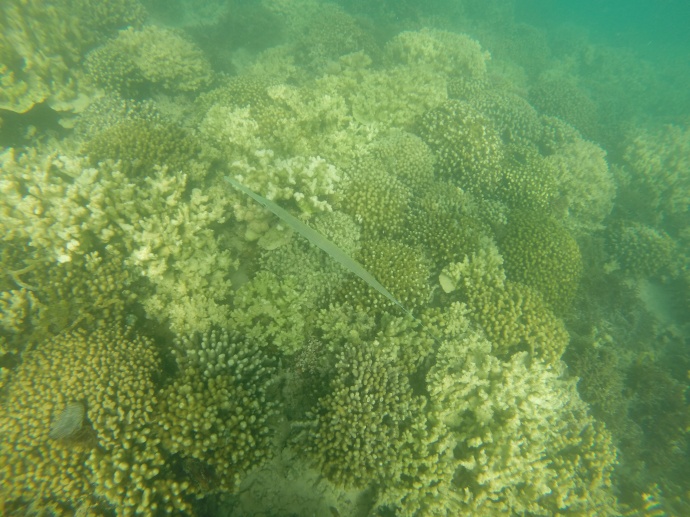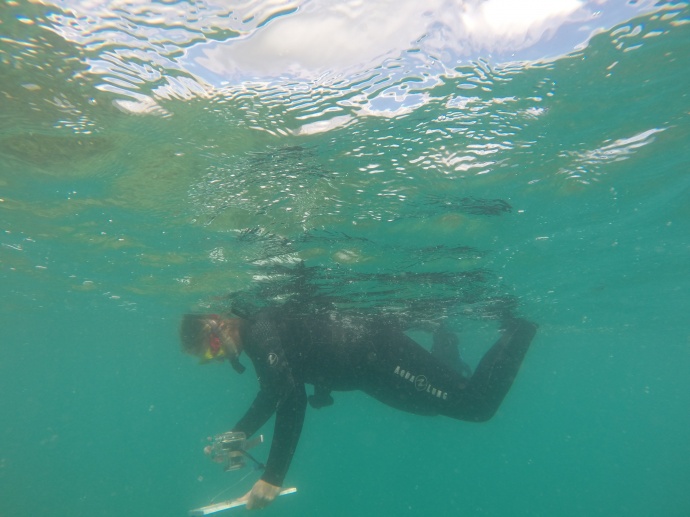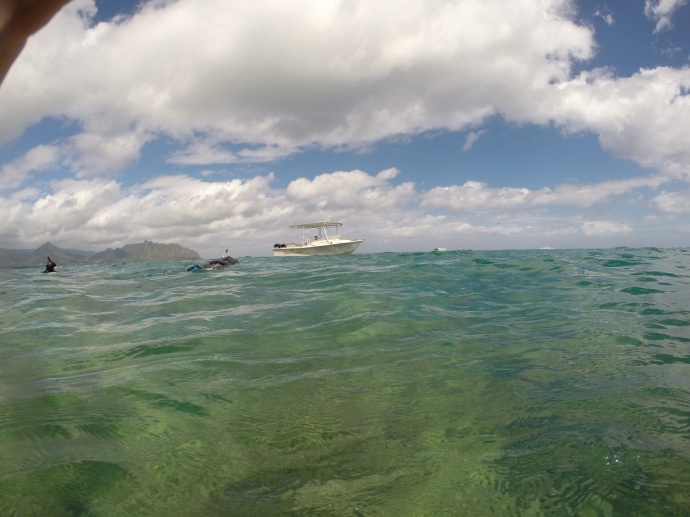VIDEO: Coral Bleaching Begins Amid Record Ocean Temps
Climate experts say the Hawaiian Archipelago is starting to feel the effects of coral bleaching as a result of coral sensitivity due to a rise in the ocean temperature.
Experts with the National Oceanic and Atmospheric Administration’s Coral Reef Watch program say the warnings indicate that high ocean temperatures compounded by an El Niño event have a strong likelihood of causing mass coral bleaching across Hawaiʻi, with the phenomenon expected to continue through October.
Brian Neilson, an aquatic biologist with the Department of Land and Natural Resources Division of Aquatic Resources commented in a press release saying, “Coral bleaching is a result of a loss of algae living within the coral’s tissue that provide them with energy and give them their colors. This loss results in the pale or white ‘bleached’ appearance of the impacted corals. When corals bleach, they lose a supply of energy and become particularly vulnerable to additional environmental stresses.”
*Image: Bleached Coral in Kāheʻohe Bay Hawaiʻi. Photo credit: XL Catlin Seaview Survey; Papahānaumokuākea Marine National Monument bleaching photo. Image credit: NOAA/PMNM/HIBM-Courtney Couch.
Scientists say there is a concern about corals dying form bleaching because “degraded reefs diminish shoreline protection and the availability of habitat for fish and other marine species. This can negatively impact ocean-related businesses and tourism, as well as availability of fish.”
State officials say last summer scientists recorded the first documented event of mass bleaching across the entire archipelago, and reefs in the Northwestern Hawaiian Islands experienced their third and worst reported mass bleaching event to date.
Dr. Ruth Gates, director of the Hawaiʻi Institute of Marine Biology commented in a press release saying, “Some corals in Kaneʻohe Bay are already visibly pale or white, reflecting the detrimental impacts of unseasonably high seawater temperatures that we have been experiencing.”
A NOAA research team recently returned with updates from the Papahānaumokuākea Marine National Monument. HIMB researcher, Courtney Couch, Ph.D., said, “We did see signs of recovery of corals in certain places, but at certain sites that experienced the most severe coral bleaching, we found that 85 to 100% of the corals have died. This is especially concerning since these sites are home to some of the most unique and rare coral species.”
DLNR has begun mobilizing monitoring surveys and meeting with partners statewide to devise coordinated response actions. DLNR Chair Suzanne Case commented saying, “Being extra careful to not damage corals, preventing pollution inputs, and using pono fishing practices can help corals to recover from this bleaching event.”
NOAA officials remain positive saying “fishing restrictions” and “healthy herbivore populations,” provide hope that the reefs will repopulate.
Case emphasized that Hawaii’s coral reefs are the foundation of a healthy ocean saying, “If we fail to protect them and lose them, it could have tremendously negative impacts not only on the overall ocean ecosystem but on Hawaiʻi’s economy.”
The state encourages people to report and document coral bleaching to the volunteer Eyes of the Reef Network www.eorhawaii.org and send images of coral bleaching to rrcpcoordinator@gmail.com.

Bleached Coral in Kāheʻohe Bay Hawaiʻi. Photo credit: XL Catlin Seaview Survey

Rapid Response Assessment Team in Kaneohe Bay: Photo courtesy: DLNR.

Rapid Response Assessment Team in Kaneohe Bay: Photo courtesy: DLNR.

Bleached Coral in Kāheʻohe Bay Hawaiʻi. Photo credit: XL Catlin Seaview Survey

Rapid Response Assessment Team in Kaneohe Bay: Photo courtesy: DLNR.

Papahānaumokuākea Marine National Monument bleaching photo. Image credit: NOAA/PMNM/HIBM-Courtney Couch.










